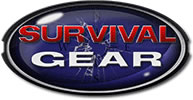The Importance of Water Purification
Having access to clean, potable water is of the utmost importance during and after an emergency. Throughout the world, a lack of clean water is one of the primary causes of disease and even death. Quite often, even in First World countries, clean water is one of the first things to go away after a disaster. In the aftermath of Hurricane Katrina, bottled water was in short supply and people were clamoring for it. The human body can only last a few days without adequate hydration and that time can be shortened in situations of high temperatures, extreme activity, and high stress, all of which may be present during an emergency.
Water Purification for Home Emergencies
I always advocate people stock up and store clean water. FEMA and other government agencies suggest a minimum of one gallon of water per person per day will be needed. The problem with that is, how do you know ahead of time how long a crisis will last? Water is heavy and you can't really pack it smaller. It is what it is in terms of size. Let's say you're prepping for a family of four. That's a minimum of four gallons of water per day. For a week, that comes to 28 gallons of water. Remember too that the one gallon per day is for consumption, a bit of cooking, and maybe sponge bathing at best. While you don't necessarily need absolutely pure water for washing up, few people I know would relish the idea of washing their face in swamp water. The point is, while storing water is a necessity, you should also have several means of filtering and purifying more water.
Fortunately, there are several means of purifying water at home when the taps aren't working. Keep in mind though that no matter which method you use, the water should first be filtered in some way. There is a difference between filtering water and purifying it. Filtering refers to removing solid matter from the water, such as dirt, insects, and other debris. Purifying water is the removal of harmful pathogens and other nasties that can make you sick.
To filter water at home, first place the water into a container and let it rest for 15-30 minutes. This allows any debris and sediment to sink to the bottom. Then, take a coffee filter and using a rubber band, secure it to the top of a second container. Slowly pour the water from the first container into the second, being careful to not dislodge the sediment. The water is then ready for purification.
One of the simplest ways to purify water is to boil it. The water should be brought to a rolling boil and kept there for a few minutes. Some experts say it only needs to be brought to a rolling boil but I feel it is better to be safe than sorry. The downside to this method is it can take a while for the water to cool enough to consume. Also, this method requires not only a container that will hold up to boiling but a heat source and fuel sufficient to boil water on a regular basis.
Household chlorine bleach can also be used to purify water. Add sixteen drops per gallon of filtered water. However, this method can impart an off taste to the water and some may find this objectionable. Also, bear in mind that bleach doesn't last forever. Once the bottle is opened, it will remain at full strength for about six months or so. After that, it starts to degrade quickly.
Solar Purification
An additive free way to purify water is through solar purification. Take a clear plastic bottle and fill it with your filtered water. Lay it on its side in the sun on a dark surface for several hours. The UV rays as well as the heat generated will kill off water borne pathogens. This is a pretty good option, provided you have several hours of strong sunlight and the time to wait.
Water purification tablets are a great way to purify water for consumption. One tablet typically treats a quart of water. This is an inexpensive method of purifying water and is obviously quite portable. Every survival kit should have at least a few water purification tablets, just in case. These tablets also have the advantage of not adding any off taste to the water.
Filters
A straw filter is another great way to purify water on the go. You simply draw the water up through the straw and drink. These straw filters are excellent protection against water borne pathogens like cryptosporidium and giardia. One of these filters will purify about 20 gallons of water. While they are great for individual use, you won't be able to purify mass quantities of water at once. But for quick use out in the field, nothing else will beat being able to simply bend down to a stream or lake and suck pure water through the straw.
Another option along this same line is the water bottle filter. It is a specially designed water bottle with the filter built in to the unit. It is similar to the straw filter in that the water is purified as it passes from the bottle to your mouth. This is a great way to transport a small quantity of water with you as you move around but again, it won't work for purifying larger quantities such as for cooking.
Always keep in mind the Rule of 3s - have at least three ways to accomplish a given goal. With water purification, this could mean having straw filters and water bottle filters for immediate drinking usage, then water purification tablets and bleach or boiling for purifying large quantities of water for cooking and such.
